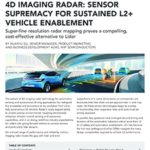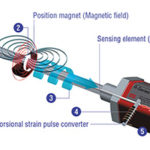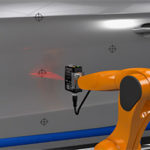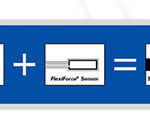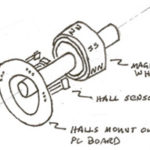Discover how 4D imaging radar is revolutionizing autonomous driving, offering precision and affordability unmatched by Lidar. Download this white paper... … [Read more...] about 4D Imaging Radar: Sensor Supremacy For Sustained L2+ Vehicle Enablement
Sensors
Amphenol RF solutions enable the RF & video signal chains in industrial robots
Autonomous mobile robots (AMRs) are essential in warehouse operations and Industry 4.0 logistics supply chains, including last-mile delivery. RF connectors and cable assemblies support the edge … [Read more...] about Amphenol RF solutions enable the RF & video signal chains in industrial robots
Implementing Position Sensors for Hazardous Areas & Safety
A significant proportion of industrial equipment will be deployed in what are described as hazardous areas, or possibly applications that require a functional safety assessment. Hazardous areas … [Read more...] about Implementing Position Sensors for Hazardous Areas & Safety
How New Rotary Sensor Technology Enables New Application Solutions
A new generation of touchless angle sensors can solve a number of application problems from shaft alignment issues to measuring angle through materials or in extreme environments. Download the … [Read more...] about How New Rotary Sensor Technology Enables New Application Solutions
Magnetic sensor ensures safety features in depaneling machines
The new Machinery Directive 2006/42/EC has now been in force for some time, making it increasingly important for safety-related features to be implemented in mechanical engineering. In doing so, it is … [Read more...] about Magnetic sensor ensures safety features in depaneling machines
Advantages of Laser-line vs. Laser-point distance measurement sensors
Laser distance sensors have strengths and weaknesses on different surfaces. Working with rough, reflective, and uneven surfaces can create some challenges with laser-point sensing technologies. Click … [Read more...] about Advantages of Laser-line vs. Laser-point distance measurement sensors
Inertial sensors eMagazine: Get the facts on system guidelines and more
The military demands precision and accuracy in every application, from inertial compass systems and advanced acoustic sensors to laser targeting technology. This eMagazine details guidelines … [Read more...] about Inertial sensors eMagazine: Get the facts on system guidelines and more
Improving Medical Devices with Forcing Sensing Technology
Design engineers integrate force sensors into medical devices to create smart tools that produce quantifiable data. These intelligent devices help to eliminate guesswork, create consistency, and … [Read more...] about Improving Medical Devices with Forcing Sensing Technology
Force Sensors in Robotic Design
From the operating room to the manufacturing floor, the robotic industry continues to grow and mature. As demand for robotic devices increases, so do the technology requirements. … [Read more...] about Force Sensors in Robotic Design
Understanding How Feedback Encoder Devices Operate
Feedback is used in closed loop systems in applications across all markets to control speed and/or position, and it has an important role in keeping equipment operating smoothly and accurately. This … [Read more...] about Understanding How Feedback Encoder Devices Operate
